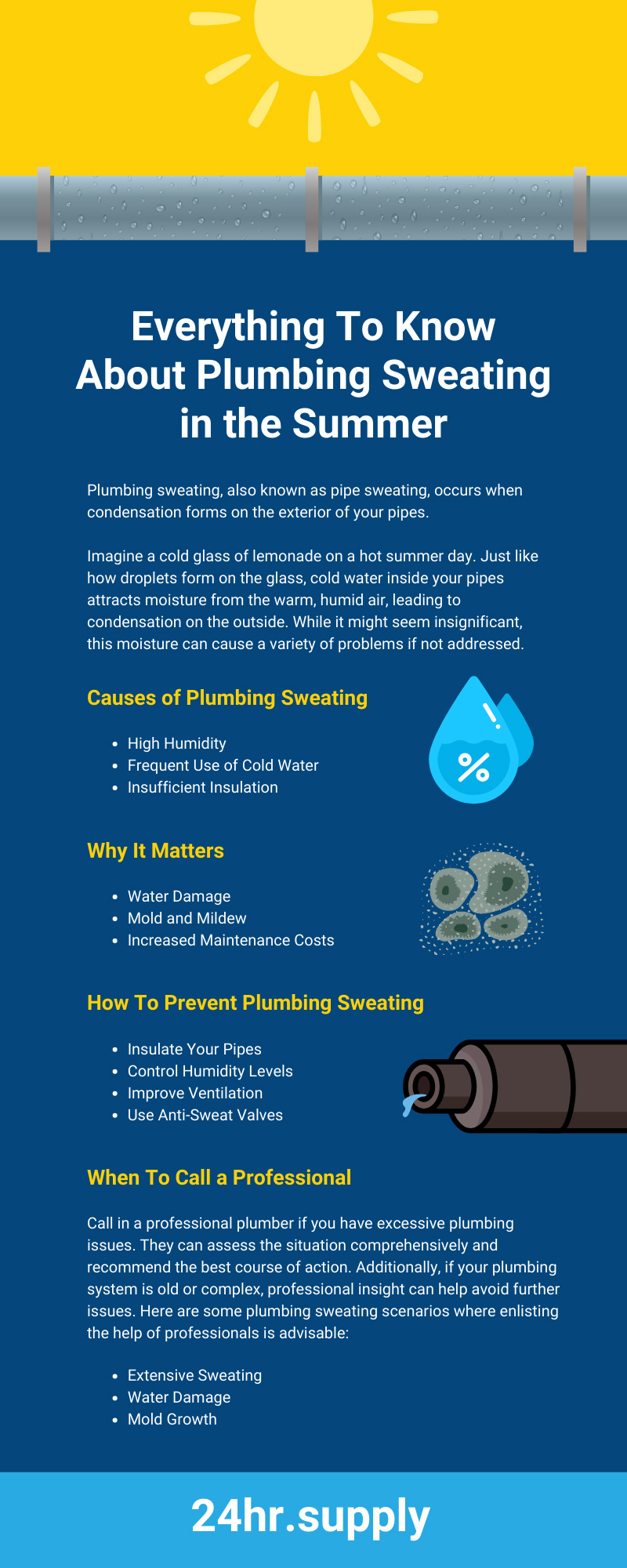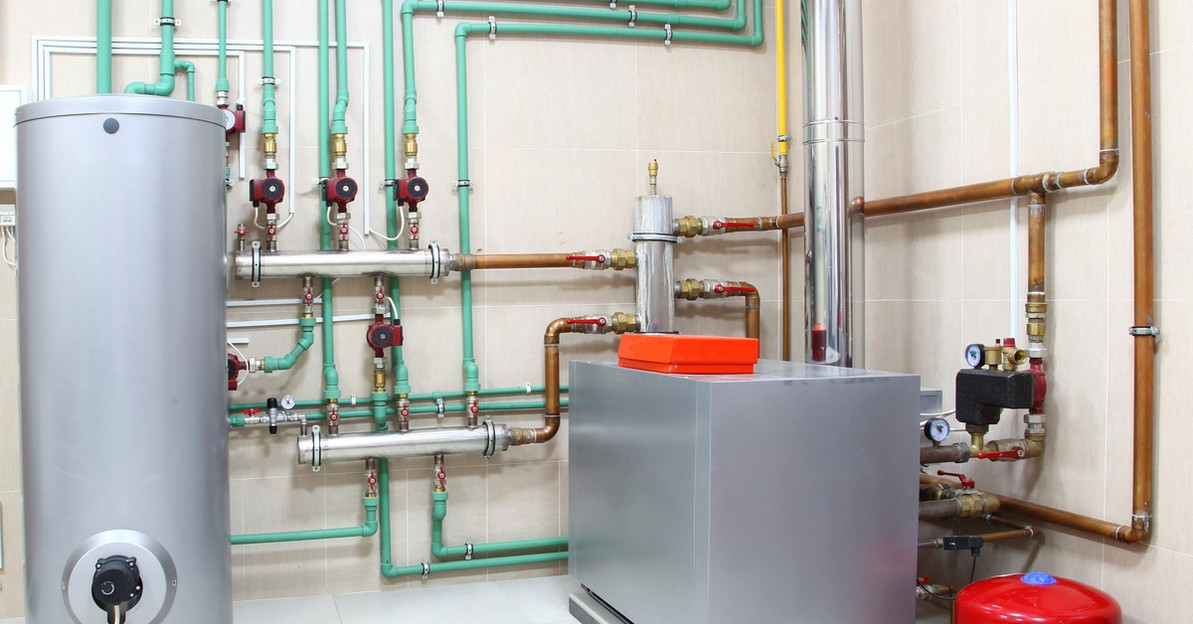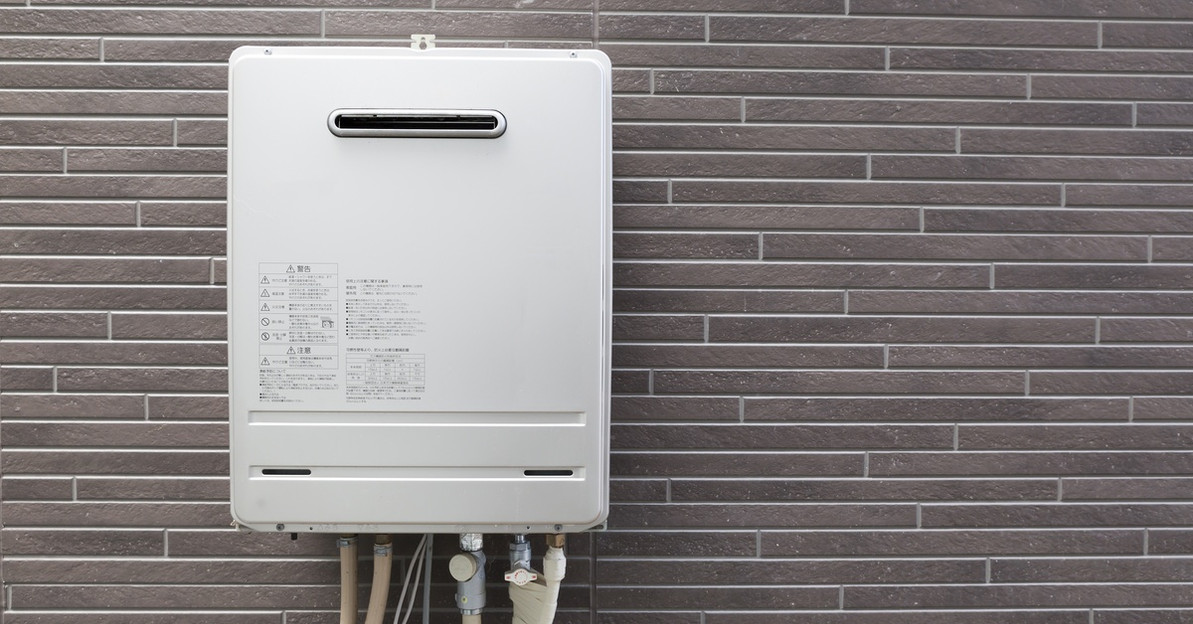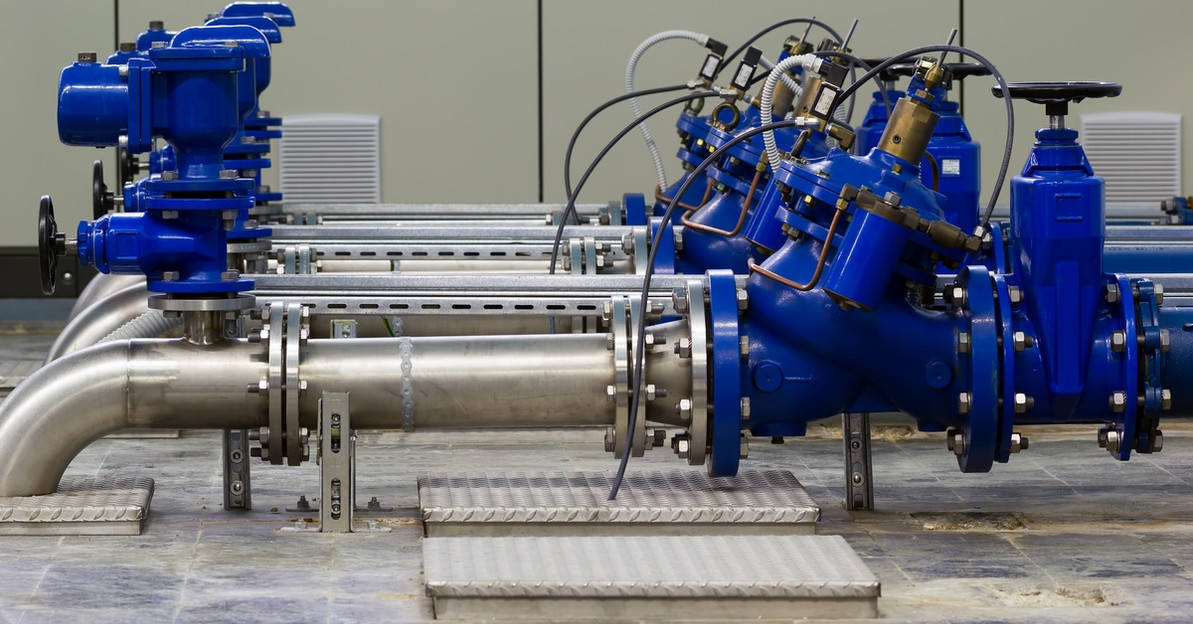Everything To Know About Plumbing Sweating in the Summer
Summer brings a delightful mix of long, sunny days, vacations, and outdoor fun. But it also comes with its own set of challenges, especially in home maintenance. Plumbing sweating is often overlooked until it becomes a massive problem.
If you’ve ever noticed water forming on the outside of your pipes during the summer, you’re not alone. This seemingly minor issue can lead to serious complications if left unchecked. In this comprehensive guide, we’ll delve into what plumbing sweating is, why it happens, the problems it can cause, and how to prevent it effectively. By the end, you'll have all the knowledge you need to keep your home’s plumbing in top shape throughout the warm months.
What Is Plumbing Sweating?
Plumbing sweating, also known as pipe sweating, occurs when condensation forms on the exterior of your pipes.
Imagine a cold glass of lemonade on a hot summer day. Just like how droplets form on the glass, cold water inside your pipes attracts moisture from the warm, humid air, leading to condensation on the outside. While it might seem insignificant, this moisture can cause a variety of problems if not addressed.
Causes of Plumbing Sweating
To tackle plumbing sweating, we first need to understand why it happens. The primary culprit is the temperature difference between the cold water inside the pipes and the warm, humid air outside. A few specific factors contributing to this issue include:
High Humidity
In some areas, summer is often brings high humidity levels. When the warm, moist air comes into contact with cold pipes, condensation inevitably forms.
Frequent Use of Cold Water
Activities such as taking cold showers, running air conditioning units, or using ice-cold water for drinking keep the temperature of your pipes low. This in turn makes them prime candidates for condensation.
Insufficient Insulation
Pipes that lack proper insulation are more prone to sweating. Insulation acts as a barrier, preventing warm air from directly touching the cold surface of the pipes.
Why It Matters
You might wonder why a bit of moisture on your pipes is such a big deal. The truth is, plumbing sweating can lead to several significant problems:
Water Damage
Condensation dripping from pipes can accumulate on floors, walls, and ceilings, causing water damage. Over time, this can weaken structural elements and lead to costly repairs.
Mold and Mildew
The moisture from sweating pipes creates a perfect environment for mold and mildew to thrive. These fungi can spread quickly, causing health issues such as allergies and respiratory problems.
Increased Maintenance Costs
Regularly dealing with the aftermath of plumbing sweating, such as water damage repairs and mold remediation, can add to your home maintenance expenses.
How To Prevent Plumbing Sweating
Keeping your plumbing from sweating in the first place requires a proactive approach. Fortunately, there are several effective strategies to keep your pipes dry and your home safe.
Insulate Your Pipes
One of the most straightforward and effective ways to prevent plumbing sweating is to insulate your pipes. Pipe insulation materials, such as foam or rubber, are readily available and easy to install. Here’s how you can do it:
Measure and Cut
Measure the length of the pipe you need to insulate and cut the insulation material accordingly.
Wrap and Secure
Wrap the insulation around the pipe and secure it with adhesive or tape. There should be no gaps where warm air can sneak in.
Inspect Regularly
Check the insulation periodically to make sure it’s still intact and replace any damaged sections promptly.
Control Humidity Levels
Using a dehumidifier in areas prone to plumbing sweating, such as basements or utility rooms, can significantly reduce the chances of condensation forming on your pipes. Keep your home’s humidity levels in check to help with plumbing sweating and improve overall air quality.
Place dehumidifiers in areas with high humidity levels and set them to maintain a comfortable humidity level (usually around 50 to 60 percent).
Improve Ventilation
Good ventilation can help dissipate the warm, humid air that contributes to plumbing sweating. Installing exhaust fans in bathrooms and kitchens can make a big difference. Additionally, opening windows and using ceiling fans can help circulate the air and reduce humidity levels.
Use Anti-Sweat Valves
Anti-sweat valves are plumbing parts that can help prevent pipes from sweating. These valves mix a small amount of hot water with the cold water in the pipes. This raises the temperature of the water slightly, reducing the temperature difference between the pipes and the surrounding air, and thereby decreasing the chances of condensation forming.
DIY Solutions vs. Professional Help
Tackling plumbing sweating can sometimes be a DIY project, but there are scenarios where professional help is advisable.
When To DIY
If the plumbing sweating is limited to a small area and you have some basic handyman skills, you can probably handle it yourself. Installing pipe insulation or using a dehumidifier are relatively straightforward tasks that don’t require professional expertise. Exhaust fans and open windows can also improve the sweating in a pinch.
When To Call a Professional
Call in a professional plumber if you have excessive plumbing issues. They can assess the situation comprehensively and recommend the best course of action. Additionally, if your plumbing system is old or complex, professional insight can help avoid further issues. Here are some plumbing sweating scenarios where enlisting the help of professionals is advisable:
Extensive Sweating
If multiple areas of your home are affected by plumbing sweating, a professional can provide a thorough assessment and solution. There could be an underlying plumbing problem that they’ll be more likely to find.
Water Damage
Significant water damage requires professional repair to prevent structural issues. Contact a water damage restoration service as soon as you notice the problem.
Mold Growth
Mold remediation is best handled by experts to ensure the mold is completely removed and doesn’t return.
Now That You Know…
Plumbing sweating might seem like a minor nuisance, but it can lead to big headaches later on if left unaddressed. From high maintenance costs to mold proliferation, the consequences can be both costly and hazardous to your health.
Fortunately, by understanding the causes of summertime plumbing sweating and implementing preventive measures, you can keep your pipes dry and your home safe. Whether you choose to tackle the issue yourself or seek professional help, the key is to act promptly. With the right approach, you can enjoy a worry-free summer, knowing that your plumbing is in tip-top shape.

Recent Posts
-
A Guide to Implementing Indirect Water Heating With Boilers
Choosing the right water heating method for your home or business significantly impacts energy effic …Dec 9th 2025 -
How Tankless Water Heaters Can Benefit Commercial Kitchens
A commercial kitchen operates at a fast pace and maintains very high performance standards. Every pi …Dec 3rd 2025 -
Noise Reduction Strategies for Urban Booster Pump Installs
In densely populated urban areas, every sound matters. The constant hum of traffic, construction, an …Dec 2nd 2025





